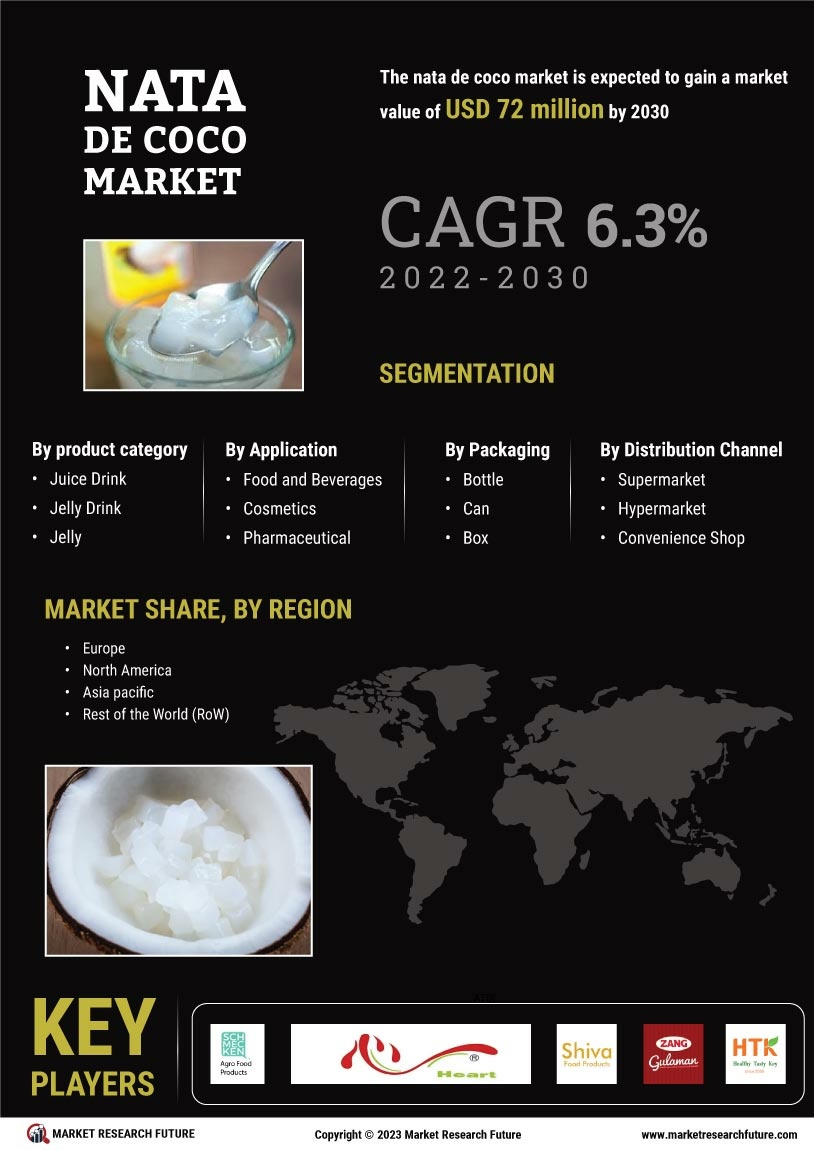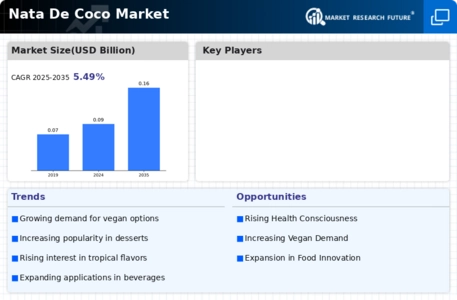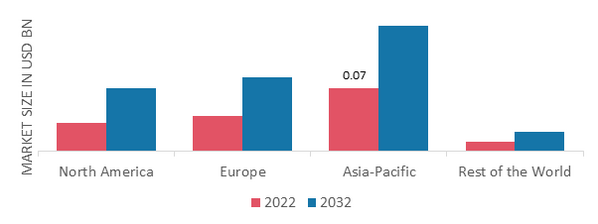Market Growth Projections
The Global Nata De Coco Industry is projected to experience substantial growth over the next decade. With an anticipated market value of 0.09 USD Billion in 2024 and a forecasted increase to 0.16 USD Billion by 2035, the industry is set to expand significantly. The compound annual growth rate (CAGR) of 5.53% from 2025 to 2035 indicates a robust upward trend, driven by various factors including health consciousness, diverse applications, and the growing demand for plant-based products. This growth trajectory highlights the potential for Nata De Coco to become a staple ingredient in global food markets.
Rising Health Consciousness
The Global Nata De Coco Industry experiences a surge in demand driven by increasing health consciousness among consumers. As individuals become more aware of the benefits of low-calorie and high-fiber foods, Nata De Coco, known for its nutritional properties, garners attention. This trend is particularly evident in regions where health trends influence dietary choices. The market is projected to reach 0.09 USD Billion in 2024, reflecting a growing preference for healthier alternatives. Consumers are increasingly seeking products that align with their health goals, thereby propelling the growth of the Global Nata De Coco Industry.
Increased Export Opportunities
The Global Nata De Coco Industry is poised to benefit from increased export opportunities as global demand for unique and exotic ingredients rises. Countries known for producing Nata De Coco are likely to explore new markets, capitalizing on the ingredient's appeal in international cuisines. This trend may lead to enhanced trade relationships and economic growth for producing nations. As the market expands, the potential for Nata De Coco exports to contribute to local economies becomes evident, suggesting a positive outlook for the industry.
Diverse Application in Food Products
The versatility of Nata De Coco in various food applications significantly contributes to the expansion of the Global Nata De Coco Industry. This ingredient is not only utilized in desserts and beverages but also finds its way into salads and savory dishes, enhancing texture and flavor. The adaptability of Nata De Coco allows manufacturers to innovate and create new products, catering to diverse consumer preferences. As the market evolves, the potential for Nata De Coco to be incorporated into health-focused and gourmet products appears promising, indicating a robust growth trajectory for the industry.
Expansion of Food and Beverage Industry
The ongoing expansion of the food and beverage industry plays a crucial role in driving the Global Nata De Coco Industry. With the rise of new food trends and innovations, manufacturers are increasingly incorporating Nata De Coco into their offerings. This ingredient's unique texture and flavor profile make it an attractive addition to a variety of products, from snacks to beverages. As the industry continues to grow, the market for Nata De Coco is projected to reach 0.16 USD Billion by 2035, reflecting the ingredient's increasing popularity and versatility in food applications.
Growing Demand for Vegan and Plant-Based Products
The Global Nata De Coco Industry benefits from the rising demand for vegan and plant-based food products. As more consumers adopt plant-based diets, the appeal of Nata De Coco as a natural, plant-derived ingredient becomes increasingly pronounced. This trend is particularly relevant in regions with a high concentration of health-conscious and environmentally aware consumers. The market is expected to grow at a CAGR of 5.53% from 2025 to 2035, indicating a sustained interest in plant-based alternatives. The incorporation of Nata De Coco into vegan recipes and products aligns with the broader shift towards sustainable eating habits.












Leave a Comment